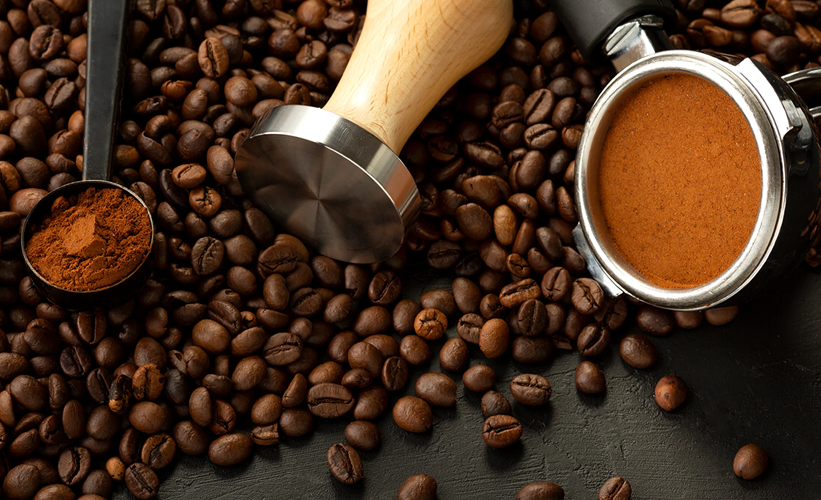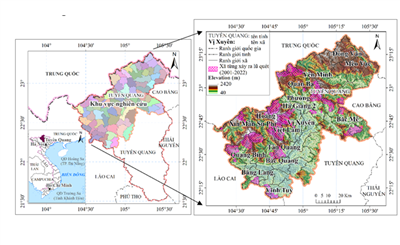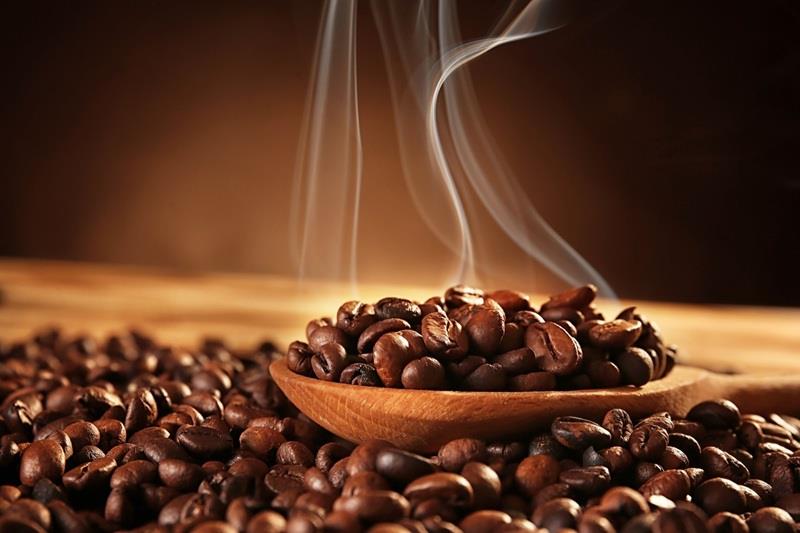
Coffee by-products: Unlocking new value from an overlooked resource
17/11/2025TN&MTCoffee is one of the most widely consumed beverages in the world. Depending on the processing method, various by-products are generated, yet these materials remain substantially underutilized in Vietnam. Recognizing this gap, a research team from Nong Lam University, Ho Chi Minh City, and Quy Nhon University conducted a study titled “Coffee by-products: Chemical composition and potential applications in food processing.” By compiling and analyzing the characteristics of key by-products—coffee pulp, mucilage, husk, parchment, silver skin, and spent coffee grounds—the authors identified noteworthy levels of dietary fiber, polyphenols, caffeine, and multiple antioxidant compounds. Based on these findings, the study evaluates potential applications in beverage development, extraction of bioactive compounds, enzyme production, and food processing, thereby opening pathways to add value to coffee by-products in Vietnam.
Coffee by-products: A plentiful but underutilized resource
Vietnam is among the world’s largest exporters of green coffee beans, with production concentrated mainly in the Central Highlands and distributed across the Southeast, the central coastal region, and parts of the north. According to preliminary 2023 statistics, Vietnam cultivated approximately 718.6 thousand hectares of coffee and produced 1.9568 million tons, predominantly Robusta. Such substantial output inevitably generates significant volumes of by-products during processing.

Coffee processing generates by-products such as pulp, husk, parchment, and silver skin—materials rich in fiber, polyphenols, caffeine, and other antioxidants. Despite their value, these by-products remain largely underutilized in Vietnam, even though global research highlights their potential for beverages, enzyme production, and bioactive compound extraction
Structurally, the coffee bean accounts for only about 50% of the fruit’s total mass. The remaining layers—pulp, mucilage, husk, parchment, and silver skin—form a sizable proportion of the biomass derived from processing. Documentation indicates that from 100 kg of fresh coffee cherries, processors may obtain 39 kg of pulp, 22 kg of mucilage, 45% dried husk (via dry processing), 0.4% silver skin, and 14 kg of spent coffee grounds produced during beverage preparation. Most of this material is still not effectively utilized.
In Vietnam, coffee by-products are often discarded or used on a small scale for composting or drying into cascara tea. Meanwhile, global studies show that these materials contain substantial levels of fiber, sugars, polyphenols, proteins, and antioxidant compounds with valuable nutritional and technological properties. Limited valorization results not only in wasted resources but also in environmental pressure on processing regions.
Within the broader shift toward circular economy models and sustainable use of agricultural by-products, reassessing the composition and potential applications of coffee by-products is increasingly necessary. This is also the core objective of the study: to provide a scientific foundation for guiding the development of value-added products from a resource that remains largely overlooked.
Chemical composition: The scientific basis for potential applications
A coffee fruit is composed of several layers, each with distinct proportions and chemical characteristics. According to compiled research, the outer skin accounts for 7–8% of the fruit, the pulp about 45%, mucilage forms a thin layer enveloping the parchment, silver skin contributes only approximately 1.2%, and the coffee bean makes up the remainder. This structural and compositional diversity underpins the potential of coffee by-products in various food-related applications.
Coffee pulp, a major by-product of wet processing, has high moisture content (78–81%) and is rich in cellulose (36% dry basis), pectic polysaccharides (21%), hemicellulose (9%), and sugars (5%). Studies on Robusta cultivated in Vietnam have also identified polyphenols, flavonoids, proanthocyanins, caffeine, and chlorogenic acid—bioactive components of growing interest.
Mucilage exhibits the highest moisture level (84%) and contains pectic polysaccharides (30%), hemicellulose (18%), protein (17%), and cellulose (8%). Its carbon-rich nature makes it well-suited for fermentation processes that produce enzymes or organic compounds.
Dried coffee husk, the main by-product of dry processing, has low moisture (13–15%) and a high lignin content (38%), followed by cellulose (28%), hemicellulose (25%), and protein (8–11%). Caffeic acid and chlorogenic acid—two common antioxidant compounds—have also been detected.
Parchment contains around 9% moisture, with xylans (35%), lignin (32%), and cellulose (12%). It likewise contains several polyphenols, including gallic acid, chlorogenic acid, p-coumaric acid, and sinapic acid.
Silver skin, although representing only 0.4% of the fruit mass, consists predominantly of polysaccharides (40%), along with protein (19%), ash (5–7%), and antioxidant caffeoylquinic derivatives.
Spent coffee grounds (SCG), generated during beverage preparation, contain 61% moisture; the dry fraction is composed of 66% polysaccharides, mainly galactomannans, arabinogalactans, and cellulose. SCG also contain antioxidant compounds such as 3-O-, 4-O-, and 5-O-caffeoylquinic acids.
Taken together, these data show that coffee by-products are not merely agricultural waste but nutrient-rich materials with high levels of bioactive compounds. Components such as tannins, chlorogenic acids, polyphenols, and caffeine have been widely documented for their antioxidant, antimicrobial, and metabolic effects. These insights provide an essential scientific basis for developing beverages, functional ingredients, and value-added food products from coffee by-products.
From traditional beverages to fermented products: Emerging applications
In recent years, coffee by-products—particularly pulp and husk—have received growing attention for their potential in beverage development. Cascara tea, produced from dried coffee husk, is the most familiar product; however, research suggests that the potential of coffee fruit materials extends far beyond traditional applications.
For non-fermented beverages, several studies have explored ways to enhance flavor and increase bioactive content. Sunarharum et al. (2021) reported that adding 20% dried lemon peel to cascara tea improved sensory scores to 5.55/9, while maintaining 25.05 mg GAE/g total polyphenols and 0.69 mg/g caffeine. Another study found that cold-steeping for 12 hours at 5°C increased antioxidant activity and bitterness, whereas hot brewing at 77°C for 8 minutes resulted in higher polyphenol content (Abduh et al., 2023).
Beyond cascara, fruit blends have also been tested. Contreras-Oliva et al. (2022) found that combining 5 g coffee pulp, 2.5 g blueberries, and 5 g strawberries produced a beverage with sensory scores of 7–8/9, 26.95 mg GAE/g total polyphenols, and antioxidant activity of 9,110.65 µmol Trolox/g.
For fermented beverages, coffee pulp has demonstrated strong potential as a fermentation substrate. Bae et al. (2022) produced coffee cherry wine and observed that Wickerhamomyces anomalus generated 11% alcohol after 10 days, while Saccharomyces cerevisiae contributed the highest antioxidant activity (45.91% DPPH inhibition). KC et al. (2021) similarly produced wine with 8.87% alcohol, 30.94 mg/L caffeine, 77.56 mg/100 mL polyphenols, and a sensory acceptance score of 6.35/10.
Another promising avenue is probiotic beverages. Patil et al. (2022) used coffee pulp as a substrate for kefir grains, achieving products containing 8 Log CFU/mL lactic acid bacteria and 9 Log CFU/mL yeast after 30 days.
Additionally, kombucha has been successfully brewed using dried coffee husk and parchment. Muzaifa et al. (2023) reported alcohol levels of 0.3–0.4%, pH values from 2.8 to 2.9, and sensory scores of 3.5/5, indicating that coffee by-products can serve as viable substrates beyond traditional tea.
Collectively, these findings demonstrate that coffee by-products support a wide range of beverage innovations while meeting sensory, safety, and nutritional requirements, thereby diversifying beverage options derived from agricultural by-products.
Extraction of bioactive compounds and enzyme production: Advantages of carbon-rich materials
Coffee by-products serve as promising raw materials for extracting bioactive compounds owing to their richness in polyphenols, caffeic and chlorogenic acids, anthocyanins, and pectin.
Serna-Jiménez et al. (2023) optimized a method using distilled water, 370 W ultrasound, a 1:10 solid–liquid ratio, 5.5 minutes, and a temperature of 75°C, yielding extracts containing 147.9 mg/L caffeine and 164.9 mg/L total polyphenols, including protocatechuic acid, gallic acid, 5-chlorogenic acid, rutin, and caffeic acid.
Tran et al. (2022) applied 700 W microwave-assisted extraction using 50% ethanol at a 1:20 ratio and obtained 6 mg caffeine, 47 mg polyphenols, 36 mg flavonoids, and 8 mg chlorogenic acid per gram—higher than yields achieved via ultrasound.
Pectin extraction from coffee pulp was detailed by Reichembach and de Oliveira-Petkowicz (2020), who used freeze-drying, 80% ethanol treatment, and mild HNO₃ hydrolysis, achieving a 14.6% yield with 79.5% galacturonic acid and 63.2% methoxyl content, suitable for gelling applications.
Anthocyanin extraction using methanol/HCl for 18 hours at 4°C yielded 25 mg/100 g dry matter, identifying cyanidin 3-rutinoside and cyanidin-3-glucoside as major compounds.
In enzyme production, the carbon-rich composition of coffee by-products makes them suitable substrates. Coffee pulp has been used to produce β-glucosidase (22.59 UI/mL, Dias et al., 2015), cellulase (888 UI/mL with pineapple peel, Selvam et al., 2014), and tannase (110.82 UI/g with Penicillium sp., Bhoite et al., 2015). Polygalacturonase production under solid-state fermentation reached 60 UI/mL (Rodríguez-Frómeta et al., 2020).
Another promising direction is organic acid production. Pleissner et al. (2016) fermented hydrolyzed pulp with Bacillus coagulans, yielding 55.5–68.6 kg of L(+) lactic acid per 1,000 kg of raw material, demonstrating commercial viability in food and biobased packaging industries.
These findings reaffirm that coffee by-products are valuable sources of bioactive compounds and functional materials for various high-value applications.
New opportunities for Vietnam’s food processing industry
Evidence from both domestic and international studies highlights that coffee by-products—ranging from pulp and husk to silver skin and spent coffee grounds—are rich in fiber, polyphenols, and antioxidants, and can be incorporated into diverse food-processing pathways. This opens promising opportunities to expand value-added product lines, reduce waste, and support circular economy initiatives within the coffee sector.
Several food product trials have explored incorporating coffee pulp or spent grounds into solid foods. Olaiya et al. (2016) showed that replacing 5–10% of wheat flour with pulp flour enhanced fiber content and antioxidant activity in bread while maintaining acceptable structure and loaf volume. In biscuit formulations, Habtamu (2020) found that 5% pulp produced the best sensory results, whereas 10% achieved the highest antioxidant activity (60.48% DPPH inhibition).
Nutritional bar formulations that combine pulp flour with oats and honey have also shown improved antioxidant activity and good structural stability, suggesting potential for convenient food products derived from coffee by-products.
Spent coffee grounds have likewise been tested in baked goods. Vignoli et al. (2020) demonstrated that SCG can enhance fiber content and antioxidant activity while retaining the thermal stability of polyphenols. SCG have also been evaluated in gummy candies and fortified products due to their natural coloring and antioxidant properties.
Beyond food applications, increased utilization of coffee by-products helps mitigate environmental pressures associated with coffee processing. Improper disposal of these materials can pollute water sources and soil; converting them into beverages, food ingredients, or substrates for enzyme production reduces waste while adding value to the supply chain.
From a circular economy perspective, coffee by-products present opportunities to strengthen linkages between farmers, processors, and research institutions. When research outputs translate into tangible products, farmers benefit from selling by-products at higher value, enterprises diversify their offerings, and academic institutions refine relevant technologies. This aligns with national strategies promoting resource efficiency, emission reduction, and sustainable agriculture.
Overall, current scientific evidence provides a strong foundation for positioning coffee by-products as important raw materials for developing new food products. When effectively utilized, they can significantly contribute to Vietnam’s coffee value chain and support emerging trends in sustainable, value-added food production.
Minh Thao
Source: Based on the research project “Research coffee by-product: Composition and application in food processing" conducted by Duong Thi Ngoc Diep, Hoang Quang Binh, Nguyen Thi Thu Thuy from the Faculty of Chemical Engineering and Food Technology, Nong Lam University, Ho Chi Minh city and Department of Research Affairs and International Relations office, Quy Nhon University
















